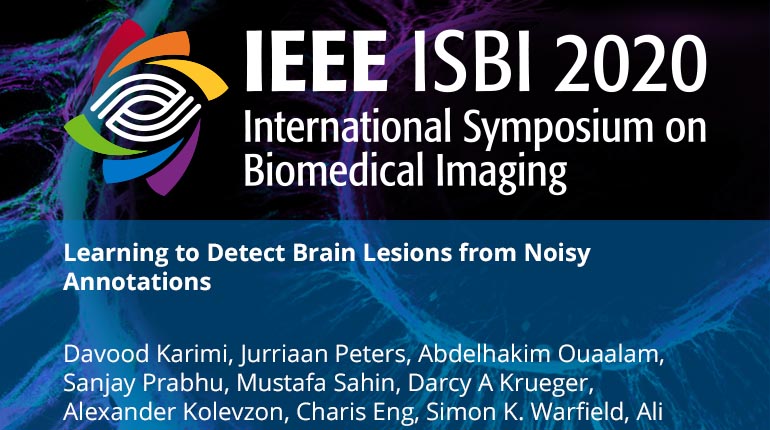Collection:

Supervised training of deep neural networks in medical imaging applications relies heavily on expert-provided annotations. These annotations, however, are often imperfect, as voxel-by-voxel labeling of structures on 3D images is difficult and laborious. In this paper, we focus on one common type of label imperfection, namely, false negatives. Focusing on brain lesion detection, we propose a method to train a convolutional neural network (CNN) to segment lesions while simultaneously improving the quality of the training labels by identifying false negatives and adding them to the training labels. To identify lesions missed by annotators in the training data, our method makes use of the 1) CNN predictions, 2) prediction uncertainty estimated during training, and 3) prior knowledge about lesion size and features. On a dataset of 165 scans of children with tuberous sclerosis complex from five centers, our method achieved better lesion detection and segmentation accuracy than the baseline CNN trained on the noisy labels, and than several alternative techniques.
- IEEE MemberUS $11.00
- Society MemberUS $0.00
- IEEE Student MemberUS $11.00
- Non-IEEE MemberUS $15.00
Videos in this product
Learning to Detect Brain Lesions from Noisy Annotations
Supervised training of deep neural networks in medical imaging applications relies heavily on expert-provided annotations. These annotations, however, are often imperfect, as voxel-by-voxel labeling of structures on 3D images is difficult and laborious. In this paper, we focus on one common type of label imperfection, namely, false negatives. Focusing on brain lesion detection, we propose a method to train a convolutional neural network (CNN) to segment lesions while simultaneously improving the quality of the training labels by identifying false negatives and adding them to the training labels. To identify lesions missed by annotators in the training data, our method makes use of the 1) CNN predictions, 2) prediction uncertainty estimated during training, and 3) prior knowledge about lesion size and features. On a dataset of 165 scans of children with tuberous sclerosis complex from five centers, our method achieved better lesion detection and segmentation accuracy than the baseline CNN trained on the noisy labels, and than several alternative techniques.
 Cart
Cart Create Account
Create Account Sign In
Sign In
